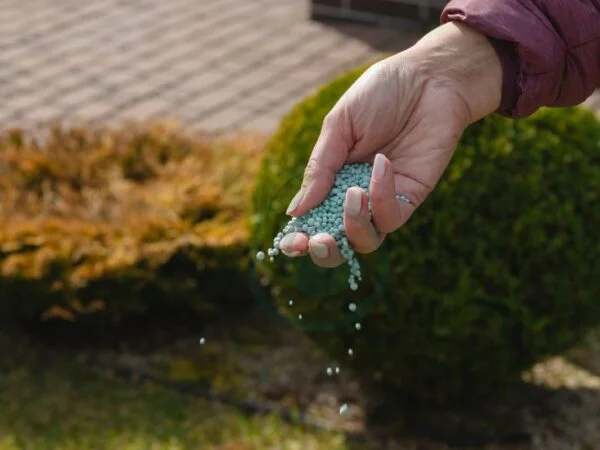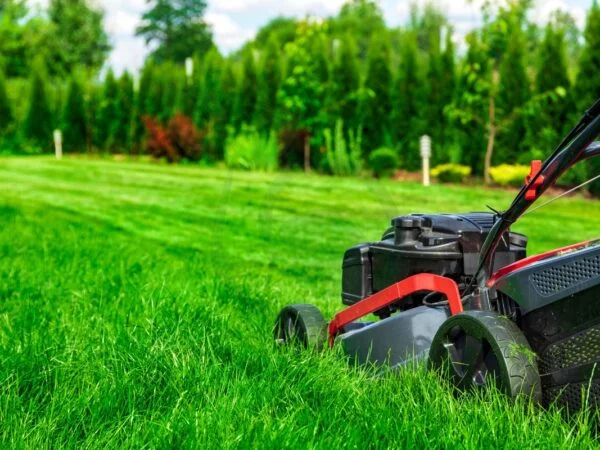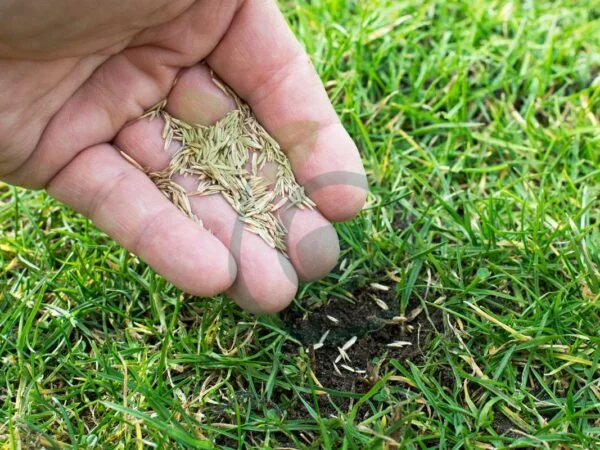Finding the best temperature for grass seed germination is crucial for a lush, healthy lawn. Whether you're a seasoned gardener or just starting, understanding grass varieties, perennial ryegrass, proper timing, and soil temperatures can make or break your lawn care efforts. Contrary to popular belief, it's not just about sowing and watering; the right temperature plays a significant role in the success of your grass seeds. By knowing the optimal conditions for germination, you can ensure that your lawn thrives from the very beginning.
Key Takeaways
- Maintain Consistent Temperatures: Ensure the soil temperature stays within the ideal range for grass seed germination, typically between 60-75°F, to promote successful growth.
- Protect from Temperature Fluctuations: Shield newly planted grass seeds from drastic temperature changes to prevent stress and optimize germination rates.
- Choose Quality Grass Seed: Select high-quality grass seed products suited for your region and soil type to enhance germination and establish a healthy lawn.
- Follow Proper Seeding Techniques: Implement correct grass seed application methods, such as overseeding or slit-seeding, to improve seed-to-soil contact and boost germination.
- Plant at the Right Time: Time your grass seed planting to coincide with optimal growing conditions for the specific grass type you're cultivating, maximizing its chances of thriving.
- Care for New Grass Diligently: Provide adequate watering, avoid premature mowing, and follow recommended maintenance practices to nurture young grass seedlings and encourage strong root development.
Ideal Germination Temperatures
Optimal Range
Grass seeds germinate best within a temperature range of 60-75 degrees Fahrenheit. This range provides the ideal conditions for seed activation and growth. Consistent temperatures in this range promote quicker and more uniform germination, leading to a lush lawn.
Temperature fluctuations can significantly impact seed germination. Sudden drops or spikes in temperature, especially cool ones, can slow down or even halt the germination process. It is crucial to maintain a stable environment to ensure successful seed sprouting.
Cold Limits
Cool temperatures can have detrimental effects on grass seed germination. When exposed to temperatures below 45 degrees Fahrenheit, seeds may enter dormancy rather than sprouting. Avoid sowing seeds in excessively cold conditions to prevent stunted growth and poor establishment.
It's essential to understand the specific cool temperature thresholds that hinder seed germination. Grass seeds struggle to sprout when subjected to prolonged periods of cold weather, especially below 40 degrees Fahrenheit. Planting during warmer seasons ensures better chances of successful germination.
Heat Tolerance
Grass seeds exhibit varying levels of tolerance towards high temperatures during the germination phase. Excessive heat can lead to desiccation, where the seeds dry out before they can establish roots properly. To manage heat stress during germination, provide adequate moisture by watering lightly multiple times a day without causing waterlogging.
Temperature Maintenance Tips
Soil Preparation
Proper soil preparation is crucial for successful grass seed germination. It ensures the seeds have the best environment to grow. Start by removing any debris or rocks from the soil to create a smooth surface for seeding. Next, loosen the top layer of soil to improve aeration and allow roots to penetrate easily. Testing and adjusting soil pH levels are vital as it directly affects seed germination rates.
To prepare your soil effectively, consider conducting a soil test to determine its pH level and nutrient content. Based on the results, you can amend the soil with necessary nutrients or organic matter before seeding. Adequate aeration is also essential as it allows oxygen to reach the seeds, promoting healthy growth.
Watering Practices
Proper watering practices play a significant role in ensuring successful seed germination. It is important to keep the soil consistently moist but not waterlogged during this critical stage. Watering frequency will depend on weather conditions; typically, watering once or twice daily may be necessary in hot and dry climates.
Overwatering can lead to fungal diseases and hinder seedling growth, while underwatering can cause seeds to dry out and fail to germinate properly. To prevent these issues, ensure that you water deeply but infrequently, allowing the moisture to penetrate deep into the soil where roots can access it efficiently.
Mulching Benefits
Using mulch during grass seed germination offers various benefits that promote healthy growth. Mulch helps retain moisture in the soil, preventing it from drying out too quickly under direct sunlight or windy conditions. Mulch acts as an insulator, regulating soil temperature, which is crucial for optimal seed germination rates.
When selecting mulch for your lawn project, opt for organic materials like straw or shredded leaves that decompose over time and enrich the soil with nutrients. Avoid using thick layers of mulch that could suffocate emerging seedlings; instead, apply a thin layer evenly across the seeded area for best results.
Impact of Temperature Fluctuations
Germination Success
Successful grass seed germination hinges on several key factors. Adequate moisture, oxygen, and the right temperature are crucial. Consistent watering to keep the soil moist but not waterlogged is essential for successful germination. Ensuring that the seeds have access to sunlight can significantly improve germination rates.
Challenges may arise during germination, especially due to fluctuations in temperature. Extreme heat or cold can slow down or even halt the germination process. To tackle this issue, it's important to monitor the weather forecast and adjust planting times accordingly. Protecting newly planted seeds from harsh temperatures by using shade cloth or mulch can also help maintain optimal conditions for growth.
To maximize germination rates and ensure healthy seedlings, consider prepping the soil adequately before planting. Clear any debris, rocks, or weeds that could impede growth. Using high-quality seeds suited for your specific region and climate can also boost success rates.
Growth Rate
Temperature plays a vital role in determining the growth rate of grass seedlings. Warmer temperatures tend to accelerate growth while cooler temperatures may slow it down. It's crucial to strike a balance and provide an optimal environment for consistent growth.
Factors such as adequate sunlight exposure, proper watering techniques, and nutrient-rich soil contribute significantly to promoting healthy growth rates in grass seedlings. Regularly monitoring soil moisture levels and adjusting watering schedules based on weather conditions can help maintain ideal growing conditions.
To promote robust growth in grass seedlings, consider fertilizing with a balanced fertilizer rich in nitrogen at appropriate intervals throughout the growing season. Avoid over-fertilization as it can harm young plants rather than benefit them.
Best Grass Seed Products
Selection Tips
Select grass seeds based on your climate and soil type for successful growth. Consider sunlight exposure and water availability when choosing seeds. Opt for top-quality seeds from reputable brands like Jonathan Green.
Product Benefits
Explore Jonathan Green's diverse range of grass seed, soil enhancers, and fertilizers. Benefit from using products such as MAG-I-CAL and Love Your Soil for optimal results. Premium products can improve soil quality and support robust grass growth.
Grass Seed Application Techniques
Proper Sowing
Sow grass seed by preparing the soil, ensuring it's loose and free of debris. Spread seeds evenly using a spreader. Rake the area gently to cover the seeds lightly with soil for optimal germination conditions. Proper sowing is crucial for successful grass seed germination, leading to a lush and healthy lawn.
Coverage Consistency
Achieving consistent coverage when sowing grass seed is vital for uniform growth across your lawn. To avoid patchy areas, overlap each pass slightly while spreading the seeds with a spreader. Consistent coverage not only ensures even growth but also enhances the overall health and appearance of your lawn.
Timing for Planting Grass
Fall Planting Advantages
Planting grass seeds in fall offers several advantages that contribute to optimal growth and a lush lawn. The cooler temperatures of fall create an ideal environment for grass seed germination, promoting healthy root development. increased moisture levels during fall support the establishment of new grass seeds by providing essential hydration.
Embracing the benefits of fall planting can lead to a vibrant lawn in spring. Leveraging the cool weather and moist soil conditions enables grass seeds to take root effectively. By planting in fall, homeowners set the stage for robust grass growth that will thrive come springtime.
Spring Planting Benefits
In certain regions, spring serves as an ideal time to plant grass seeds due to specific climatic conditions. The warmer temperatures of spring, coupled with longer daylight hours, create favorable circumstances for successful seed germination and rapid growth.
Maximizing the benefits of spring planting involves taking advantage of the optimal growing conditions provided by this season. Homeowners can capitalize on the warmth and extended sunlight hours, ensuring strong root development and healthy establishment of their lawns during spring.
Nurturing New Grass Seedlings
Essential Watering
Proper watering plays a crucial role in nurturing healthy grass seedlings. It is essential for optimal growth.
Watering frequency should be consistent, ensuring the soil remains moist but not waterlogged. During the initial stages of growth, light watering multiple times a day is recommended to keep the seeds hydrated. As the grass matures, transitioning to deeper and less frequent watering promotes root development.
To avoid common mistakes like overwatering or underwatering, monitor soil moisture levels regularly. Overwatering can lead to fungal diseases, while underwatering stunts growth and development.
Fertilization Needs
Fertilization is vital for supporting grass seed germination and subsequent growth. It provides essential nutrients for healthy root establishment and foliage development.
Applying fertilizers at the right time is crucial. Before planting grass seeds, prepare the soil with a balanced fertilizer rich in nitrogen, phosphorus, and potassium. After germination, use a starter fertilizer to encourage robust root growth.
Jonathan Green offers quality fertilization products tailored to different stages of grass development. Their formulations provide the necessary nutrients for lush green lawns.
Weed Management
Managing weeds during grass seed germination is critical for successful establishment of your lawn. Weeds compete with new grass seedlings for resources like sunlight, water, and nutrients.
To effectively control weeds without harming your grass seeds, consider using pre-emergent herbicides before planting to prevent weed germination. Post-emergent herbicides target existing weeds without affecting your developing grass.
Regularly inspect your lawn for any signs of weed infestation and promptly address them with appropriate weed control methods.
Mowing and Care for New Grass
Correct Mowing Techniques
Proper mowing post-germination is crucial to ensure healthy grass growth and development. Maintaining the ideal mowing height helps young grass establish strong root systems and resist pests. It's recommended to mow new grass at a height of 2-3 inches to promote root growth.
Regular mowing is essential for young grass, but frequency should be adjusted based on growth. Mow when the grass reaches about one-third taller than the recommended height. Sharpening mower blades regularly ensures clean cuts that prevent stress on the plants.
Post-Germination Care
After grass seedlings emerge, it's vital to provide proper care for their development. Watering is crucial, especially during hot weather or drought conditions, to support root establishment. Fertilizing with a balanced formula helps in providing necessary nutrients for healthy growth.
Weeding is important post-germination as weeds can compete with young grass for resources like water and sunlight. Regular weeding sessions will help maintain a weed-free lawn without harming the delicate new grass plants. Proper mowing techniques play a significant role in promoting dense and healthy turf.
To nurture young grass plants for long-term health, it's essential to follow a consistent care routine that includes watering deeply but infrequently, fertilizing according to soil tests, regular weeding sessions, and maintaining optimal mowing practices.
Maximizing Planting Timing Advantage
Seasonal Strategies
Fall, winter, and spring each offer unique opportunities for grass seed germination. In fall, the soil is warm, providing an ideal environment for seeds to sprout. Winter planting can be challenging due to freezing temperatures but offers a head start in spring. Spring brings warmer weather, promoting rapid growth.
When planting grass seed in fall, ensure adequate moisture and protection from frost. Winter seeding requires protection with straw or blankets to prevent freezing. In spring, focus on consistent watering and protecting new growth from sudden temperature changes.
Weather Considerations
Weather plays a crucial role in the success of grass seed germination. Excessive heat can dry out seeds while heavy rains may wash them away. To combat adverse weather effects, water lightly but frequently during hot spells and cover newly planted areas during heavy rains.
Adjust your lawn care practices based on upcoming weather forecasts to optimize germination chances. If rain is predicted, delay mowing until the ground has dried slightly to avoid compacting the soil too much.
Closing Thoughts
You've learned about the best temperatures for grass seed germination, how to maintain them, and the impacts of fluctuations. Choosing quality grass seed products, applying them correctly, and nurturing new seedlings are vital. Remember to mow and care for your new grass appropriately to ensure healthy growth. By maximizing your planting timing advantage, you set your lawn up for success.
Now that you have the knowledge and tools to foster optimal grass growth, go ahead and put these tips into action. Your efforts will yield a lush, vibrant lawn that enhances your outdoor space. So, get out there, apply what you've learned, and watch your grass thrive!
Frequently Asked Questions
What are the ideal germination temperatures for grass seed?
Grass seeds generally germinate best when soil temperatures are between 60-75°F. Warm-season grasses prefer higher temperatures around 80-95°F, while cool-season grasses thrive in cooler conditions of 50-65°F.
How can I maintain the optimal temperature for grass seed germination?
Maintain consistent soil moisture and provide shade during hot weather to help regulate soil temperature. Mulching the area can also help insulate the soil and prevent rapid temperature fluctuations that may hinder germination.
What is the impact of temperature fluctuations on grass seed germination?
Temperature fluctuations can negatively affect germination rates by causing stress to the seeds. Rapid changes in temperature can lead to inconsistent growth patterns and reduce overall success in establishing healthy grass coverage.
Which are some of the best grass seed products recommended for optimal results?
Popular choices for high-quality grass seed include Kentucky Bluegrass, Fescue, Bermuda Grass, and Ryegrass varieties. Choose a blend that suits your climate and specific lawn needs for successful establishment and long-term growth.
When is the best timing for planting new grass seed?
The ideal time to plant new grass seed depends on whether you're using warm-season or cool-season varieties. Generally, early fall or spring are preferred times as they offer moderate temperatures and ample moisture for successful germination and growth.
Image Source: Paid image from CANVA





